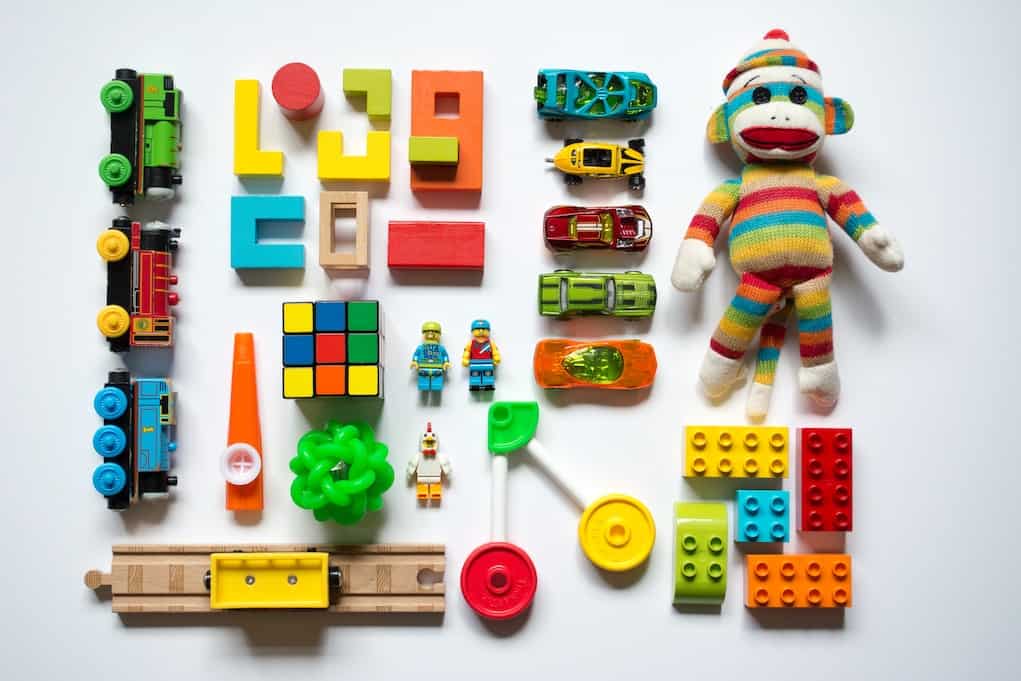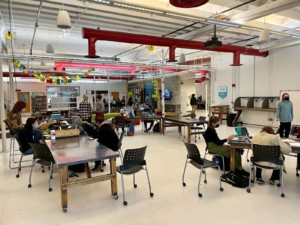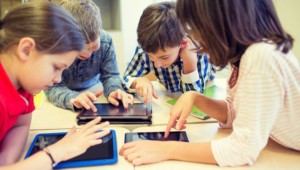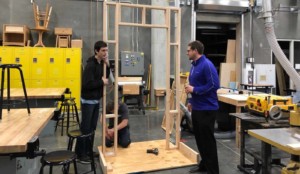Portrait of a School Wide Project Launch

When it comes to bringing happiness to a child, there may not be anything more universal than a toy. In an effort to engage in the power of toys, teachers at iLEAD Agua Dulce are challenging their TK-6th graders to a very ambitious school wide project: ‘How Can I Spread The Joy of Toys?’
The Purpose, The Vision
As a school, iLEAD Agua Dulce has already established the tradition of doing a school wide project at the beginning of the school year for a variety of foundational reasons. These are, according to Director Lisa Latimer, at the heart of what makes their learning community very special and successful. “Facilitating a school wide project creates collaboration, community, and sets the standard for the rest of the year,” said Latimer. “The learners understand their why and learn to be part of a real learning culture.”
This collaborative spirit is not only evident in the learners, but also in the facilitators. Through the school wide project, Latimer said the staff becomes more adept at problem solving, communication, and embracing an overall common mission. “The facilitators end up doing better work together overall and become part of a healthier facilitator culture,” said Latimer.
Fourth Grade Facilitator Chris Bojorquez-Engelhardt concurred with the benefits of implementing a school wide project early in the year. “It demonstrates the school synergy to both learners and facilitators, as well as community,” said Bojorquez-Engelhardt. “New facilitators have support on their first project since all facilitators are engaged in a similar pursuit.”
The Driving Questions
There are many ways individual grade levels can address the driving question. At iLEAD Agua Dulce, here is what ‘How Can I Spread The Joy of Toys’ looks like by grade level:
- TK/K/1st/2nd Grades: How can we design toys that help kids stay connected?
- Purpose: Learners will engage in the engineering and design thinking process to keep them connected with one another in order to create a sense of joy and normalcy during these unprecedented times.
- 3rd Grade: How can we design toys that bring joy to other children?
- Purpose: To connect learners with the idea of “paying it forward”, through philanthropic ideas and engage in engineering and design thinking.
- 4th Grade: How can we use our knowledge of supply and demand to become more creative consumers?
- Purpose: Learners will identify and interpret the multiple causes and effects of consumerism through the exploration of toy products and engage in the engineering and design thinking process.
- 5th Grade: How can we design and market an innovative toy through a successful business model?
- Purpose: Learners will understand the entrepreneurial spirit by exploring different ways to create a successful business through the exploration of toys.
- 6th Grade: How can we use the evolution of toys/games to design and market an adaptable product for the present day?
- Purpose: Learners will demonstrate their resourcefulness by utilizing their engineering and design thinking skills to create a toy/game and a successful marketing strategy that is adaptive for the present day pandemic.
Why This Resonates
Launching a school wide project needs to connect with learners, facilitators, and the school community. Facilitators agreed that this project resonated immediately with them intellectually, emotionally, and personally.
Outdoor Classroom Facilitator Aidan Bybee believes that this project speaks perfectly to childhood, as well as with the school’s play-based learning philosophy. Bybee said she can’t think of a more authentic project that could engage all learners. “The driving question connects to a personal aspect for learners and will capture their attention in a variety of aspects,” said Bybee.
Third Grade Facilitator Rhonna Horney thinks this project connects her service and philanthropic experiences, as well as the desire for the learners to give back. “This clicked with me because I’ve been very fortunate to experience the joy of giving,” said Horney. “I think it will resonate with my learners as well because they enjoy ultimately giving to others.”
Impact & The Joy Of Learning
Whether students are learning about marketing, service aspects, or even the design process, Bojorquez-Engelhardt loves how this project ultimately models for learners how to address needs in the community. He also sees this project as having endless potential products, pathways, and public outcomes. “I’m very excited to see the creativity learners are going to bring to this project,” said Bojorquez-Engelhardt. “I want them to see the why behind it.”
This project is a great vehicle for learners to really experience service, empathy and connection to others, according to Horney. “Facilitating life lessons, compassion and empathy are important values to instill in the future generations and one of my favorite aspects of teaching,” said Horney.
Latimer sees this specific project, as well as school wide projects overall, as a means to accomplish so much in a very global, collaborative effort. “This project sparks curiosity and inquiry, while being relevant, personalized, and engaging. It not only embodies design, engineering, entrepreneurialism, and philanthropy, but encompasses all areas of the curriculum,” said Latimer. “More importantly, it allows our learners to have the autonomy to have voice and choice on how they want to present their creative product, speak their thoughts, and have their opinions valued.”
For more, see:
- Developing Skills for School, Work and Life Requires a Systematic Approach
- A Celebration Of Cross-Curricular Creativity
- 3 Lenses for Developing Deeper Driving Questions
Stay in-the-know with innovations in learning by signing up for the weekly Smart Update.






Neerja
For cool ideas to impact student engagement.